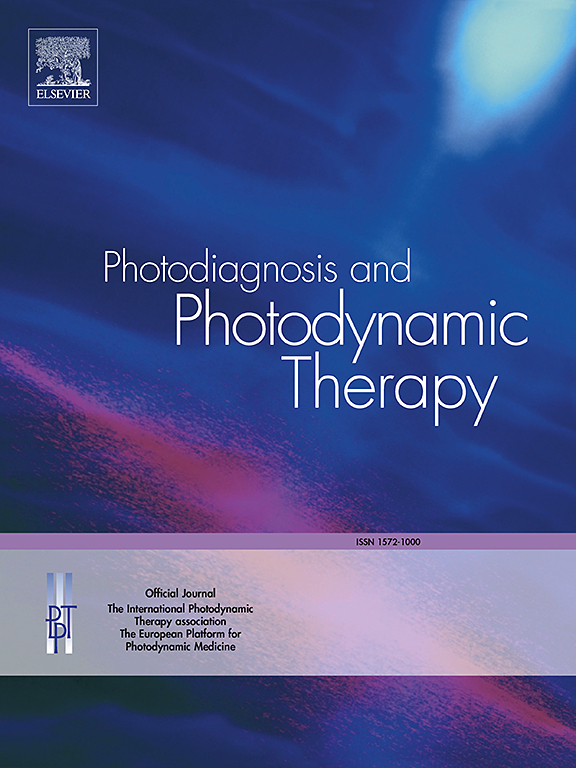拉曼光谱辅助光化性角化病诊断及光动力治疗疗效评价1例。
IF 3.1
3区 医学
Q2 ONCOLOGY
引用次数: 0
摘要
光化性角化病(AK)是一种具有恶性潜能的癌前皮肤病变,需要及时诊断和有效的治疗监测。氨基乙酰丙酸光动力疗法(ALA-PDT)是AK的推荐治疗方法,但目前缺乏评估治疗效果的方法。拉曼光谱技术有望成为AK无创诊断和PDT疗效动态检测的重要工具。本文报告一位77岁女性AK患者接受拉曼光谱检测并成功进行PDT。利用便携式拉曼光谱仪,确定了不同的光谱特征:1688厘米的拉曼谱带(⁻¹),归因于AK病变中弹性蛋白的积累;1615厘米的拉曼谱带(⁻¹)与黑色素前体酪氨酸(tyrosine)有关。患者接受了三次ALA-PDT测试,每次测试后采集拉曼光谱以显示峰值强度的渐进变化。研究结果证明了拉曼光谱的双重潜力:通过弹性蛋白相关生物标志物进行非侵入性诊断,通过酪氨酸相关光谱变化进行PDT的实时疗效评估,提供分子特异性和动态监测,无需侵入性程序。本文章由计算机程序翻译,如有差异,请以英文原文为准。
Raman spectroscopy assisted diagnosis and photodynamic therapy efficacy evaluation of actinic keratosis: Case report
Actinic keratosis (AK), a precancerous skin lesion with malignant potential, demands timely diagnosis and effective treatment monitoring. Aminolevulinic acid photodynamic therapy (ALA-PDT) is the recommended treatment for AK, but there is currently a lack of methods to evaluate the effectiveness of treatment. Raman spectroscopy might be a promising tool for non-invasive diagnosis of AK and dynamic detection of PDT efficacy. This article reports a 77-year-old female patient with AK who received Raman spectroscopy detection and successful PDT. Utilizing a portable Raman spectrometer, distinct spectral features were identified: Raman band at 1688 cm⁻¹, attributed to elastin accumulation in AK lesions, and Raman band at 1615 cm⁻¹, associated with tyrosine, a melanin precursor. The patient underwent three sessions of ALA-PDT and Raman spectra were acquired after each session to reveal progressive changes in peak intensities. The findings demonstrate Raman spectroscopy’s dual potential: non-invasive diagnosis via elastin-related biomarkers and real-time efficacy evaluation of PDT through tyrosine-associated spectral changes, offering molecular specificity and dynamic monitoring without invasive procedures.
求助全文
通过发布文献求助,成功后即可免费获取论文全文。
去求助
来源期刊

Photodiagnosis and Photodynamic Therapy
ONCOLOGY-
CiteScore
5.80
自引率
24.20%
发文量
509
审稿时长
50 days
期刊介绍:
Photodiagnosis and Photodynamic Therapy is an international journal for the dissemination of scientific knowledge and clinical developments of Photodiagnosis and Photodynamic Therapy in all medical specialties. The journal publishes original articles, review articles, case presentations, "how-to-do-it" articles, Letters to the Editor, short communications and relevant images with short descriptions. All submitted material is subject to a strict peer-review process.
 求助内容:
求助内容: 应助结果提醒方式:
应助结果提醒方式:


